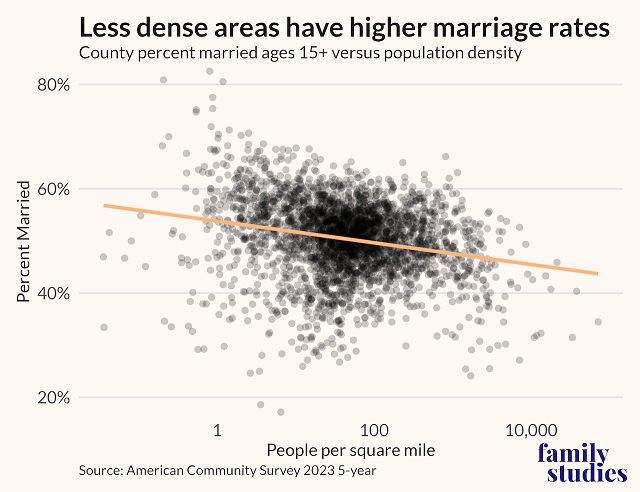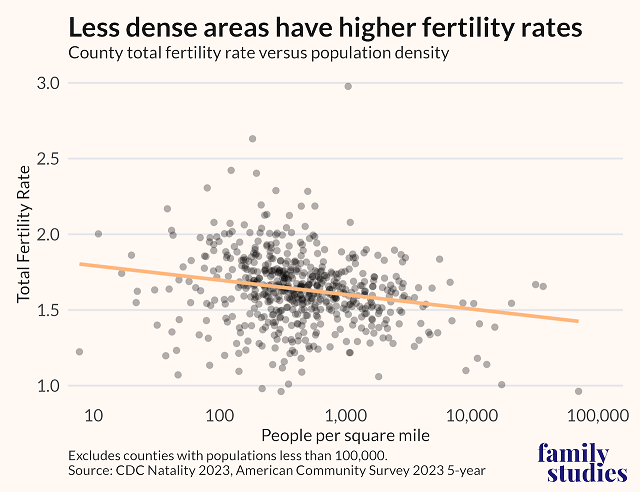Highlights
- Republicans are now using the regulatory state to do family policy. Post This
- There are growing signs the second Trump administration will move much more aggressively to make America more family friendly. Post This
- Duffy’s DOT policy is likely to reorient transportation dollars to lower-density communities where there are more single-family homes, family life is often more affordable, and family formation is higher. Post This
The first Trump administration did not do a lot to advance the family policy ball. Sure, they doubled the Child Tax Credit to $2,000 in 2017. Otherwise, Trump 1.0 didn’t score many wins on the family field. But there are growing signs the second Trump administration will move much more aggressively to make America more family friendly.
Speaking at the March for Life last month, Vice President JD Vance declared it is “the task of our government to make it easier for young moms and dads to afford to have kids” and to “raise thriving and healthy families in our country.” Vance himself is dedicated to pushing for a major expansion of the child tax credit for working families when Congress takes up the matter later this year.
But we are also seeing promising signs that many other moves are likely in the offing from the Trump administration. Transportation Secretary Sean Duffy just released a memo directing the Department of Transportation to prioritize communities that have higher birth and marriage rates. The memo states:
To the maximum extent permitted by law, DOT-supported or -assisted programs and activities, including without limitation, all DOT grants, loans, contracts, and DOT-supported or -assisted State contracts, shall prioritize projects and goals that … mitigate the unique impacts of DOT programs, policies, and activities on families and family-specific difficulties, such as the accessibility of transportation to families with young children, and give preference to communities with marriage and birth rates higher than the national average.
Secretary Duffy’s move, which has attracted a firestorm of negative responses from D.C. think tanks and Democratic leaders, is a very big deal. It represents a creative move by one cabinet secretary in the Trump administration to take family policy in a new administrative direction — to boost the fortunes of the family not just through new laws but also new regulations, in an age when marriage and fertility rates in America have hit record lows.
We don’t typically think of DOT spending as family policy. But it is. DOT transportation spending has often been directed toward large, urban transportation projects that end up favoring denser and more urban communities. From a family-friendly perspective, the problem is that such denser development is associated with lower family formation — less marriage and fewer children.
Federal census and CDC data reveal that density is tied, respectively, to lower marriage and birth rates. That’s because people are often reluctant to put a ring on it and raise kids in apartments and condos in costly urban neighborhoods. They’d rather live in suburbs, exurbs, small towns and rural communities where single families are affordable and their communities seem safe. So, federal government transportation funding focusing on mass transport (subways, light rail, buses) has often subsidized a model of transportation that is effectively less family friendly.

Insofar as Duffy’s policy prioritizes communities with higher marriage and birth rates, it is likely to reorient transportation dollars to lower-density communities where there are more single-family homes, family life is often more affordable, and family formation is higher. So, more money for highways, and less for subways and light rail. This suggests that suburbs, exurbs, towns and rural communities where families with kids are more common are more likely to benefit from this Trump administration move. The DOT move signals the Trump administration is willing to pull some very creative levers to realize Vance’s commitment to making it “easier for young moms and dads to afford to have kids.”

I think we can expect many more creative regulatory moves of this kind from this administration. Both the incoming cabinet secretaries and their political staffs are keenly aware that Democratic administrations have used regulatory moves to favor their causes and their constituencies. Now, they think, it’s the Republicans’ opportunity to turn the power of the administrative state toward their causes and constituencies — including married families with children at home.
The next series of moves I’d like the Trump administration to take — besides pushing Congress to expand the child tax credit — is to make America more family friendly center around housing. Legislatively, the new administration should work with leaders in the House and Senate to get some version of Utah Sen. Mike Lee’s HOUSES Act (Helping Open Underutilized Space to Ensure Shelter Act) passed, which would lead to the construction of more than 2 million homes by turning over existing federal land to development.
Administratively, the Trump team could take regulatory actions at the Department of the Interior, HUD and the Department of Agriculture to eliminate regulations that make building homes more expensive and possibly even turn over public lands to development. Another plus here is that any legislative or regulatory push to sell public lands to develop new homesteads is, as one Utah political leader told me, “smart family policy AND smart fiscal policy for Congress.”
So, stay tuned. We may well be seeing the first signs that cabinet heads and other leaders in Trump 2.0 will be taking a range of creative steps to make good on the new administration’s avowed commitment to make America more family friendly.
Editor's Note: This article appeared first at Deseret News. It has been reprinted here with permission.
Photo credit: U.S. Secretary Duffy's official Instagram page.













